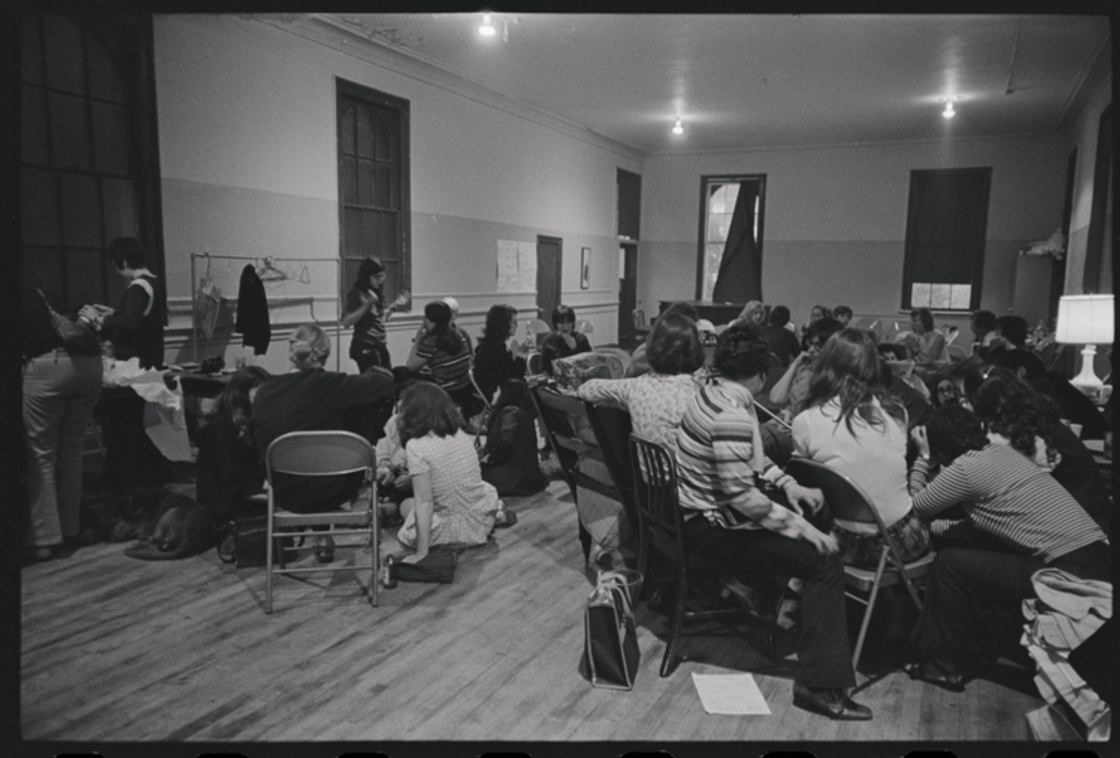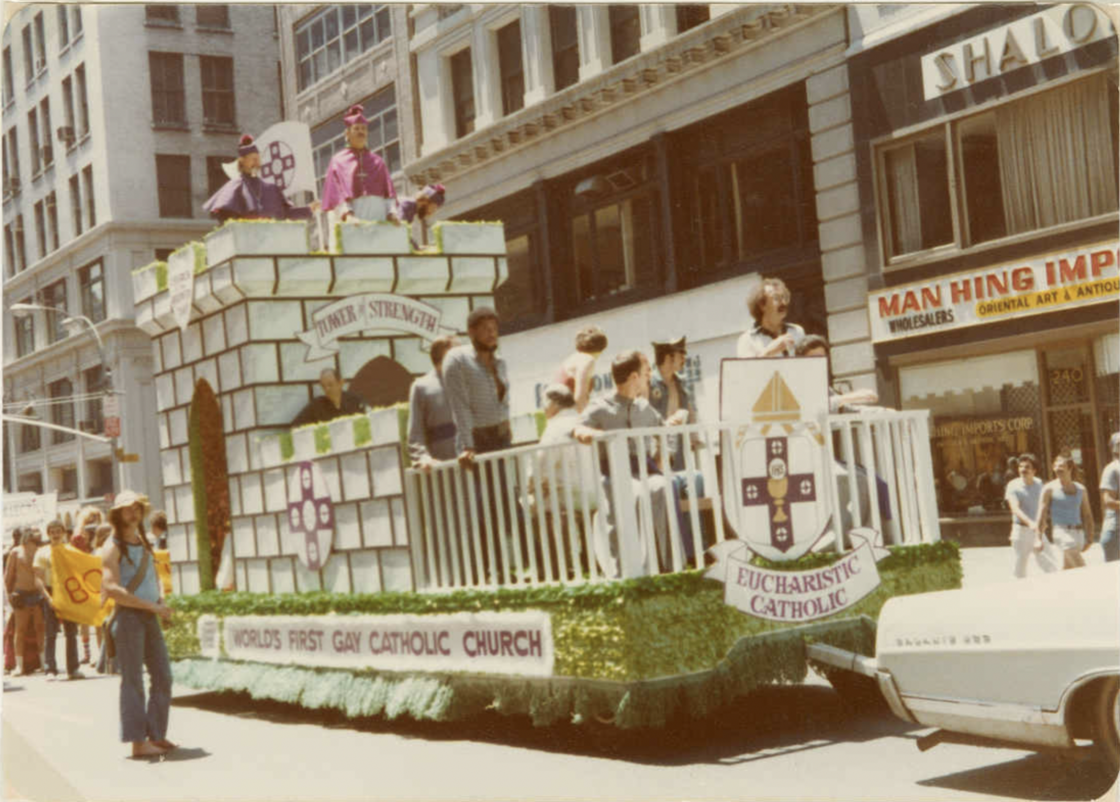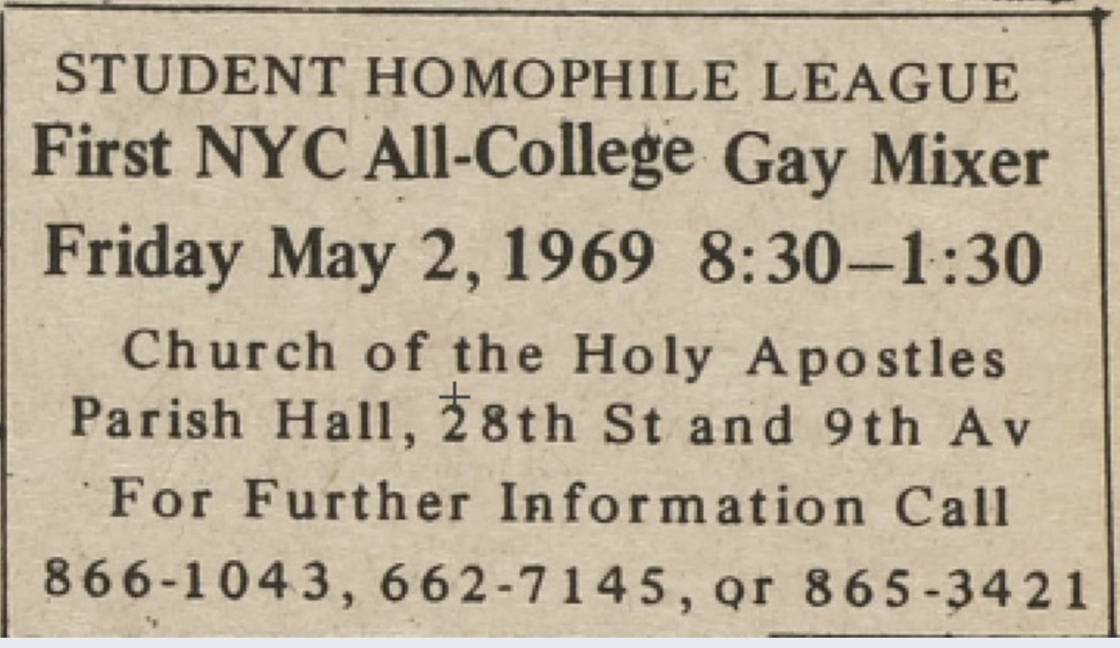The church used as a gay secret meeting ground before the Stonewall Riots
Gay students formed the Homophile League three years before the Stonewall Riots and hosted their first dance at this church.

In 1969, there were virtually no meeting spaces for the LGBTQ+ community in New York City outside of gay bars. Of course, those bars had bullseyes on their backs from law enforcement, so gay activists had to find alternative, secret meeting grounds.
GayCities readers might be surprised to learn that a parish — the Church of the Holy Apostles — was the first to offer queer New Yorkers a safe way to organize and exchange ideas. While the Stonewall Riots erupted later that year, it’s important to remember they were not planned. That historic day was a match struck against the collective timber laid by many uncredited leaders who had long advocated for change.
Pride in Places is on a mission to credit all the types of shelters that housed them. Jay Shockley, co-founder of the NYC LGBT Historic Sites Project, tells GayCities that the Church of the Holy Apostles could be considered the city’s “first LGBT community center.”
Pack your bags, we’re going on an adventure
Subscribe to our weekly newsletter for the best LGBTQ+ travel guides, stories, and more.
Subscribe to our Newsletter today
What is the Church of the Holy Apostles?

The Church of the Holy Apostles is an Episcopal parish located at 296 Ninth Avenue at 28th Street in the Chelsea neighborhood of Manhattan. The religion is a mainline Protestant Christian denomination, and this particular chapter was founded in 1844. Although Chelsea was once a thriving gay neighborhood, Shockley clarifies that the congregation had no overlapping members with the gay activist groups that met there between 1969 and 1974.
Why did the church shelter the gay rights movement?

“The church was really struggling financially,” says Shockley. “So by renting space to these early gay rights organizations, it helped the church, but it also provided a crucial meeting space for early groups, particularly the Gay Liberation Front (GLF) and the Gay Activists Alliance (GAA).”
The Church of the Holy Apostles wasn’t just a political battleground but also a dance floor for celebration. Shockley adds that the church was one of the rare public venues to host same-gender dances for women, men, and mixed groups. The Lesbian, Gay, Bisexual & Transgender Community Center wasn’t founded until 1983, so Shockley explains that the church was the first semblance of a queer community center, including for gay religious organizations.
The Episcopal church pioneered affirming LGBTQ+ people, and in 2026, it will mark 50 years of officially recognizing them as having “a full and equal claim to the love, acceptance, and pastoral care of the church.”
What is the Church of the Holy Apostles’ relationship with queerness today?

The Church of the Holy Apostles has always remained true to its mission to recruit members to the Episcopal faith and bring all people closer to God. Ironically, it was for that reason that the church welcomed gay organizations in 1969 and stopped allowing them to meet in 1974.
“The reverend essentially got pissed off that the gay groups weren’t participating in his own congregation,” says Shockley.

But that didn’t make them any less of an ally. In fact, in 1977, Bishop Paul Moore of the Episcopal Church ordained Rev. Ellen M. Barrett at Holy Apostles, making her the first openly gay or lesbian priest in the United States. Holy Apostles continues to be an inclusive and LGBTQ+ friendly place of worship.
“When we had the church listed on the National Register of Historic Places, they were absolutely overjoyed to spotlight their gay history,” says Shockley. “Gay students at Columbia University formed the Homophile League three years before the Stonewall Riots and hosted their first dance at this church.”
“Stonewall was not the beginning of anything.”

Join the GayCities newsletter for weekly updates on the best LGBTQ+ destinations and events—nearby and around the world.

 Mark
Mark 





